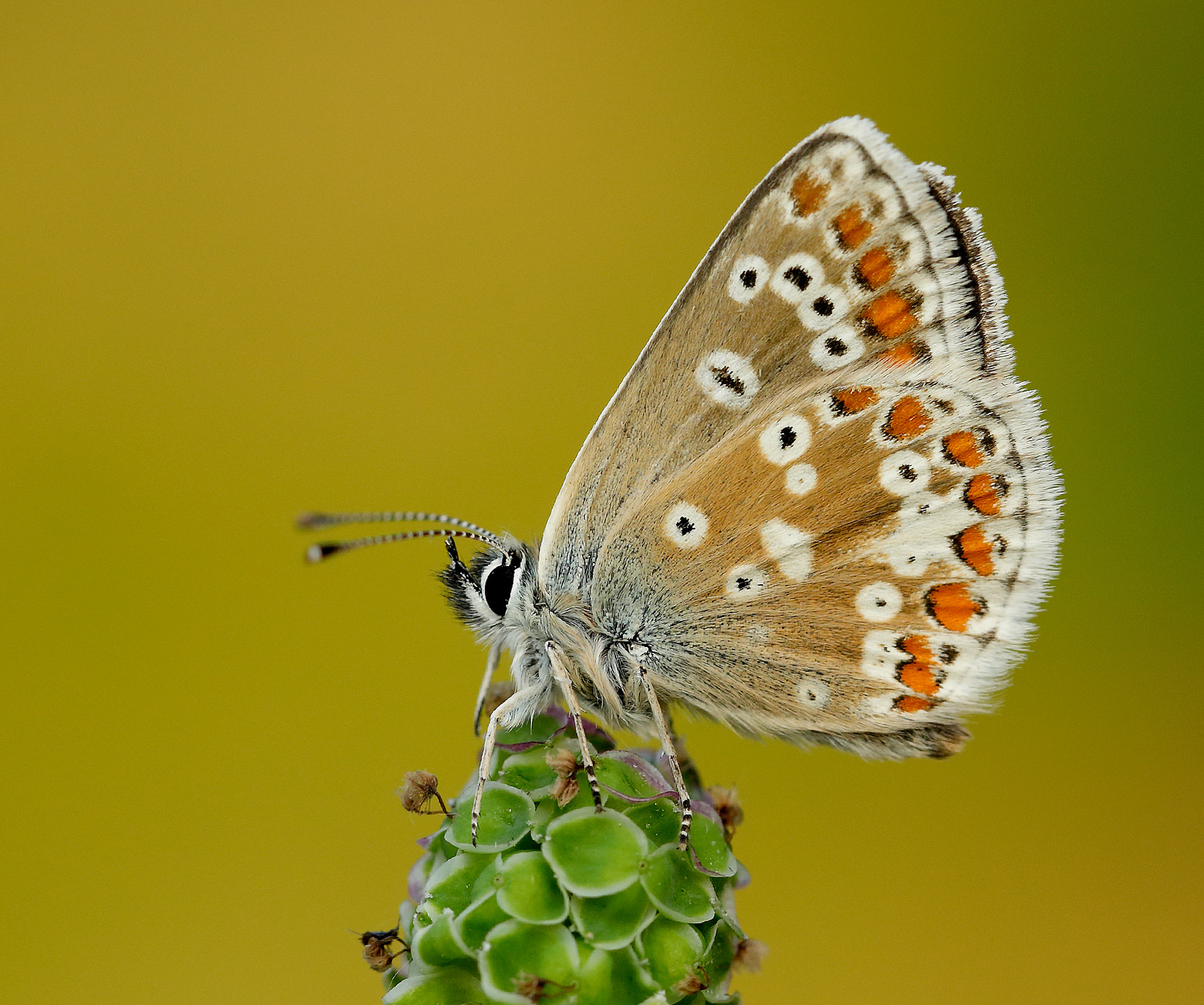A study of Northern Brown Argus in the Scottish Borders by wildlife charity Butterfly Conservation Scotland (BCS) has revealed the region to hold significant nationally important colonies. However, sadly 54 out of 92 butterfly colonies identified have been deemed as under long-term threat primarily from unsuitable grazing and afforestation.
The Northern Brown Argus is a small chocolate brown butterfly that has its UK stronghold in the Scottish Borders region. The butterfly is high priority species for BCS as its favoured habitat, species-rich grassland, is in severe decline.
In recent summers a team of BCS volunteers have been surveying many of the Northern Brown Argus colonies in the Scottish Borders and have found that almost half are at risk of being lost. Many sites are being lost to bracken and gorse invasion whilst the national drive to increase woodland cover is leading to the large-scale loss of pasture and hill-ground in the Borders to tree-planting, which if done insensitively, can lead to the loss of the butterfly’s habitat.
To combat this BCS’s volunteers in the Borders have been successfully working with landowners and woodland agents to adapt planting plans to leave pockets of species-rich grassland habitat for the Northern Brown Argus to survive.
BCS’s Conservation Officer David Hill said: “The Northern Brown Argus is a special little butterfly that is a wonderful champion for species-rich grassland. The efforts of BCS’s volunteers in the Borders has been fantastic, their knowledge and enthusiasm has given Northern Brown Argus a fighting chance in its battle to survive. We have now identified the sites most at risk and look forward to working with landowners to help protect and enhance the butterfly at these and other sites.”
Species-rich grassland is a vital habitat with abundant wildflowers such as Common Rock-rose, the caterpillar’s sole caterpillar foodplant, Wild Thyme and Birds-foot Trefoil that are of great benefit to butterflies and pollinating insects. These flower-rich grasslands have declined by at least 97% since the 1930’s largely due to agricultural improvements, development and over-grazing of cattle and sheep.
The Saving the Northern Brown Argus in the Scottish Borders project has received funding from The National Lottery Heritage Fund which has enabled BCS to analyse the data collected by volunteers to assess the status of the Northern Brown Argus in the Borders and identify threats.


